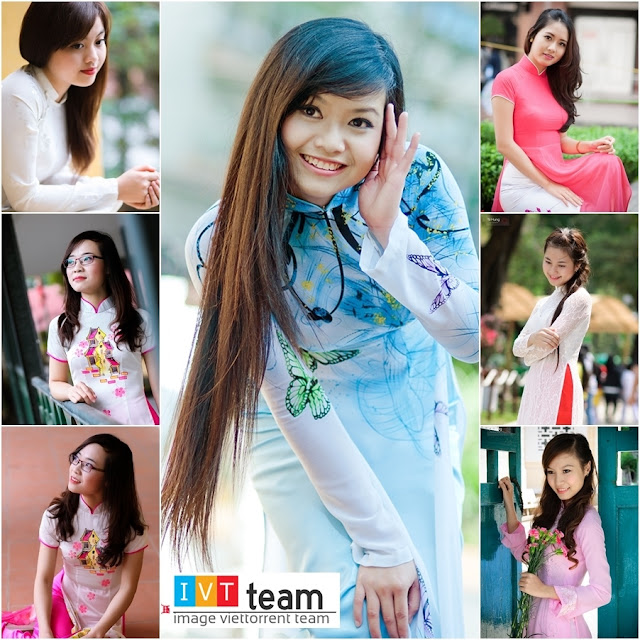The áo dài is a Vietnamese national costume, now most commonly worn by women. In its current form, it is a tight-fitting silk tunic worn over pantaloons. The word is pronounced [ʔǎːw zâːj] in the North and [ʔǎːw jâːj] in the South. Áo classifies the item as a piece of clothing. Dài means "long".
The word "ao dai" was originally applied to the outfit worn at the court of the Nguyễn Lords at Huế in the 18th century. This outfit evolved into the áo ngũ thân, a five-paneled aristocratic gown worn in the 19th and early 20th centuries. Inspired by Paris fashions, Nguyễn Cát Tường and other artists associated with Hanoi University redesigned the ngũ thân as a modern dress in the 1920s and 1930s. The updated look was promoted by the artists and magazines of Tự Lực văn đoàn (Self-Reliant Literary Group) as a national costume for the modern era. In the 1950s, Saigon designers tightened the fit to produce the version worn by Vietnamese women today. The dress was extremely popular in South Vietnam in the 1960s and early 1970s. On Tết and other occasions, Vietnamese men may wear an áo gấm (brocade robe), a version of the ao dai made of thicker fabric.
Academic commentary on the ao dai emphasizes the way the dress ties feminine beauty to Vietnamese nationalism, especially in the form of "Miss Ao Dai" pageants, popular both among overseas Vietnamese and in Vietnam itself. "Ao dai" is one of the few Vietnamese words that appear in English-language dictionaries.
Download Free Collect Part01:
Link Download: Click Here
Link Download: Click Here
Link Download: Click Here
Have fun!
1. Click on the download links
2. Wait for few seconds and then click on













.jpg)
.jpg)

.jpg)



0 comments:
Post a Comment